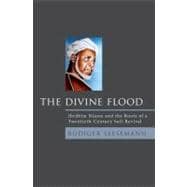
Note: Supplemental materials are not guaranteed with Rental or Used book purchases.
Purchase Benefits
What is included with this book?
| List of Figures | p. xiii |
| Note on Transliteration | p. xv |
| Prologue: "A Flood Shall Come Upon My Companions" | p. 3 |
| Introduction: Studying Sufism in Context | p. 6 |
| Perceptions and Interpreters of Sufism | p. 8 |
| Islam and Africa | p. 11 |
| Sufism in Context | p. 15 |
| The Setting | p. 12 |
| Scope and Structure of the Book | p. 24 |
| Beginnings: Ibrahim Niasse and the Advent of the Flood | p. 29 |
| Birth, Childhood, and Adolescence | p. 31 |
| Early Career | p. 37 |
| Fayda: A Short History of the Terminology | p. 42 |
| Niasse as Bringer of the Flood | p. 47 |
| Reception and Resonance | p. 58 |
| Spiritual Training: The Way to Mystical Knowledge | p. 67 |
| Tarbiya: An Overview | p. 71 |
| Spiritual Energy and the Mystical State | p. 79 |
| Justifying Tarbiya | p. 82 |
| The Three Stations of Religion | p. 87 |
| Annihilation | p. 94 |
| The Special Litanies | p. 99 |
| "The Cup Makes Its Round" | p. 104 |
| Seeing God: The Nascent-Community | p. 110 |
| Internal Tensions | p. 112 |
| Discord in L?ona | p. 120 |
| Hijra to Medina | p. 124 |
| New Attacks | p. 128 |
| The Rejoinders | p. 134 |
| Visions and Ecstatic Utterances | p. 139 |
| Crossing Borders: Expansion in Senegal and Beyond | p. 144 |
| Consolidation in Senegal | p. 146 |
| The Supreme Saint | p. 149 |
| Spiritual Authority and Social Inequalities | p. 153 |
| Passage to Mauritania | p. 159 |
| Redrawing Gender Boundaries | p. 164 |
| "The Supreme Saint of His Time": A Prophecy Fulfilled | p. 171 |
| Consequential Encounters | p. 173 |
| First Visit to Kano | p. 188 |
| The Conakry Trip | p. 191 |
| The Reception of "The Conakry Trip" | p. 202 |
| Returning to Kano and the Hijaz | p. 207 |
| Epilogue: After the Flood | p. 217 |
| Niasse's Legacy | p. 219 |
| Patterns of Expansion and Conflict | p. 225 |
| Glossary | p. 231 |
| Sources and Bibliography | p. 233 |
| Archival Sources | p. 233 |
| Interviews Cited | p. 234 |
| Writings | p. 234 |
| Primary Sources in Arabic and African Languages | p. 236 |
| Secondary Literature | p. 239 |
| Notes | p. 257 |
| Index | p. 303 |
| Table of Contents provided by Ingram. All Rights Reserved. |
The New copy of this book will include any supplemental materials advertised. Please check the title of the book to determine if it should include any access cards, study guides, lab manuals, CDs, etc.
The Used, Rental and eBook copies of this book are not guaranteed to include any supplemental materials. Typically, only the book itself is included. This is true even if the title states it includes any access cards, study guides, lab manuals, CDs, etc.